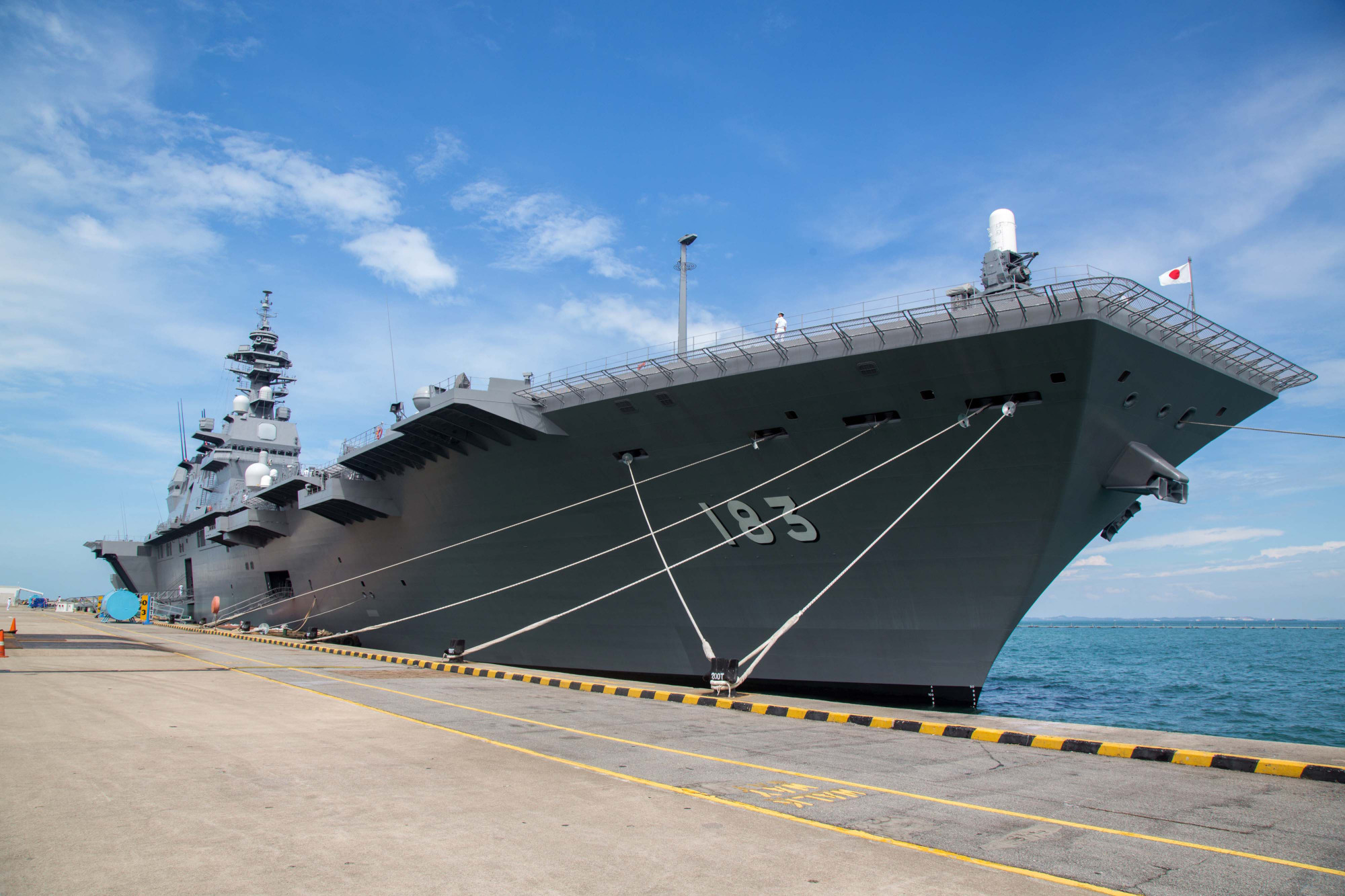The maiden overseas deployment of Japan's largest post-World War II warship, the Izumo, to a three-month South China Sea cruise at a time when the United States and China in particular are contesting for political and military primacy in the region has set tongues wagging in many parts of the world, particularly in Beijing. It is Japan's biggest foray into the region since World War II, taking place against the waxing of Chinese power and the waning of American sway.
The warship was recently in Singapore to take part in the International Maritime Review organized by the Republic of Singapore Navy as part of its 50th anniversary celebrations along with naval vessels from 20 other countries. After then making a port call in Vietnam, the Izumo, classified as a helicopter destroyer by Japan's Maritime Self-Defense Force, will call at ports in Indonesia, the Philippines and Sri Lanka before taking part in the Malabar naval exercises with the U.S. and India later in July this year. Although initially the Malabar started out as joint naval exercises between India and the U.S., Japan is now a permanent member of the same.
The Izumo's main mission has been described as anti-submarine warfare. With a length of 248 meters and a displacement of 27,000 tons (on full load), it is a huge ship, the size of Japan's WWII aircraft carriers. While Japan's four such ships are designed for helicopters, it has been reported that they may also be capable, upon modifications, of landing and launching the new F35B joint-strike fighters the U.S. is supplying. China is clearly aware of this and is not happy about it. Japan plans ultimately to purchase 42 of the VSTOL (vertical and/or short take-off and landing) aircraft.



